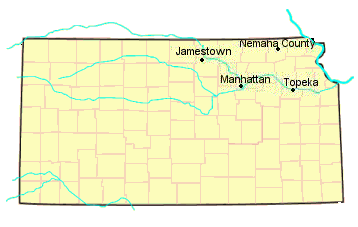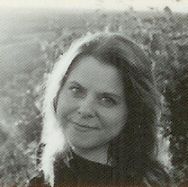Q. What inspired you to begin writing? What
do you feel your greatest inspirations have been during the years
that you have been writing?
A. Reading was what first inspired me to write. All my life I’ve
been a deeply dedicated reader. My hometown library, the Seneca
Free Public Library, was a converted Congregationalist church, and
spending time there, I learned a reverence for the written word.
There were beautiful stained glass windows all around, and to check
out your books, you had to step up to the pulpit where Elizabeth
Weber or Eddie Love, the wonderfully kind librarians, would stamp
your library card in purple ink. I believe that reading and writing
are like listening and talking—two sides of a conversation.
Reading made me want to join this conversation.
Great novels, stories and poems inspire me, as do amazing music
and art. I have also had the good fortune of having had some brilliant
and thoughtful teachers along the way for whom I am very grateful.
Q. When did you first take yourself seriously as a writer?
A. During the fifth grade I was completely smitten with Louis Fitzhugh’s
novel, Harriet the Spy. See Harriet, in addition to being a spy,
had writerly aspirations and she kept a secret notebook of observations
about her friends and family. As you could imagine, Harriet got
herself into some trouble with this, as did I when I accidentally
turned in some of my own spy notes with my math homework. Luckily
my teacher was more amused than angry. I, however, was mortified
to the core of my ten-year-old soul. I continued to write, but was
careful to guard my output from then on. It wasn’t until my
early twenties that I would call myself a writer because I thought
it was presumptuous to use that title unless I’d earned it.
When I realized that writing and literature were the things I spent
most of my time thinking about and doing, really consuming my energy,
interest, and attention, then I felt that I just might be able to
call myself a writer.
Q. When you sit down to write a poem do you usually know how you
would like it to come out, or does the creative process lead you
to surprises?
A. Most of the time when I begin a poem I begin with language—a
line that compels me, some intriguing pairing of words, an image,
a metaphor—and then let the language pull me along. It seems
that every time I sit down with an “idea” what I end
up writing seems forced, artificial. Starting out with too fixed
of a preconception of what a particular poem should do or be seems,
for me, to limit the possibilities of what it could become. One
of the great delights of writing (and reading for that matter) is
discovering the unexpected. I love the Robert Frost quote: “No
surprise for the writer, no surprise for the reader.” This
approach involves faith and oftentimes a fair bit of patience, but
it’s worth enduring the uncertainty.
Q. I’ve read that you are a native of Nemaha County. How
long has your family lived in Kansas? How has growing up and living
in Kansas influenced your writing?
A. I’m a fifth generation Kansan with my dad’s family
coming from Cloud County and my mom’s located in Nemaha County.
Living in Kansas has certainly shaped my sensibility as a writer.
The landscape, the rhythms of speech, the weather, the character
of the people, and the unique way of looking at the world just get
in you. As the old saying goes, you can take the girl out of Kansas,
but you can’t take Kansas out of the girl. I do see the influences
in my writing—the metaphors and words I choose, the cadences
and syntax. The setting of Kansas is pretty implicit (and sometimes
explicit) in a lot of my work; however, I use the K-word sparingly
when I write because I don’t want to diminish its power.
Q. Are there any favorite authors who have influenced your work?
A. There are so many that if I listed them I’d inadvertently
leave some important ones out! Rather than do that I’ll just
mention a poet whose work was an early influence on me and has remained
a strong and constant influence in my writing life: William Stafford.
His were some of the first contemporary poems I read when I was
in college, and I loved how lucid and startling and wise they were.
Then I learned that he was a born and raised Kansan like myself.
It always seemed to me that poets were either dead or from New York,
and here was one who was neither, and his poems were about my world.
I have always admired the humility and honesty in Stafford’s
work, and his voice echoed that of any of my good uncles. Almost
daily some relevant Stafford line surfaces in my thoughts. His poems
keep me excellent company.
Q. What do you hope a reader will take away from your poetry?
A. Poems should invite us to a deeper attention to the natural world
or to some aspect of the human condition. I hope a reader would
find something of themselves in my poems and thus be inspired to
a greater sympathy and understanding of others. This sounds awfully
lofty! I’d also just like the reader to enjoy the aesthetic
experience.
Q. Do you have a personal favorite among your published poems?
A. There are a few poems that I feel have more significance than others,
but none that I would say is a favorite. I’ll lean back on
a trusty Stafford quote here. When asked which of his poems was
his favorite he said, the next one.
* Miranda Ericsson interviewed Amy Fleury via E-mail on December
12, 2006
Return to Top
of Page
|

![]() Return to Topeka
Return to Topeka![]() Return
to KANSAS MAP
Return
to KANSAS MAP 

